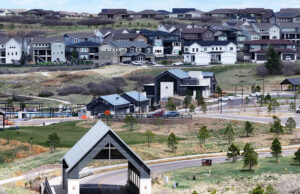In the first quarter of this year, there were many signs of a housing product shortage, but the largest homebuilder in the United States, Lennar Corp., forecasted that by mid-2020, the supply chain problems would be resolved and lumber prices would drop. The company expects profit margins to expand when pricing reaches a normal level. However, with the rising costs of construction, there is still room for improvement.
For example, one-third of all lumber in the United States is imported from Canada. The U.S. Department of Commerce has imposed a 17.9% tariff on softwood lumber from Canada, which will add about $2 per thousand of cost to a single family home. As for windows, Cunningham estimates that they can be delivered in eight to 30 weeks. The lead time is even longer for certain doors, such as those made of etched or stained glass.
The shortages will affect more than just replacement windows. Glass windows, and tiles are already experiencing delays, and home builders will see delays that range from fifteen to 45 weeks. Doors, window coverings, and shower and bath products will also be delayed, making installation even more challenging. Lumber will also be affected in the New Year, as supply shortages are affecting a wide variety of building products. Most doors and window types will be affected by the elongated delivery time, but stained glass and etched glass windows will take much longer.
The shortages will affect brick, tiles, and plaster. The shortages will not affect the supply chain and will only affect the price of bricks. But there are other products that will be hit hard by the lack of supply. For example, concrete and clay roof tiles are prone to soaring prices. Nevertheless, the supply chain disruptions will continue to impact home builders. While the construction industry can absorb some of the losses resulting from the shortages, they will most likely pass on the costs to the buyers.
According to NAHB Senior Economist David Logan, the shortages will affect nine categories of building materials. Laminated veneer lumber is particularly affected and could cause a 36 percent increase. Other products, such as steel and cement, are more vulnerable. The cost of shipping to the U.S. market is expected to increase eightfold by 2022. Regardless of the severity of the shortages, home builders must pass the costs along to consumers.
Concrete, which is the most commonly used building material, is in critical demand in the U.S. homebuilding industry. This material is crucial for construction projects and is a major component of new homes. Currently, the shortages in concrete are causing some delays in the construction process, which will affect new home construction. While it may not be enough to prevent a full-fledged housing market, it will make it more difficult for buyers to find homes.
The homebuilding industry in the U.S. is in desperate need of concrete. As a result, the construction industry is facing multiple challenges. In addition to material shortages, the construction industry is facing pressure to adapt to global climate change. Adaptation may slow productivity in the short-term, but it will be impossible to meet the demand in 2022. The U.S. government is committed to meeting this demand, but there is already a shortage of concrete.
The shortage in construction materials has led to a surge in prices. Almost all building projects, including residential and commercial construction, are now facing labor shortages. As a result, price spikes have forced some homebuilders to cut back on their projects and increase costs. Consequently, the shortage has impacted the price of homebuilding. As a result, the average price of a home in the United States is up to five times higher than it was in the previous five years.
Despite the shortage of lumber, homebuilders will still need to wait for some time for critical electrical components. While the cost of labor and materials has been rising steadily, the shortage in lumber is already forcing some homebuilders to delay their projects until after 2022. Until the supply situation improves, a shortage in building materials will continue. In the meantime, there is a shortage of supplies of essential building materials.













